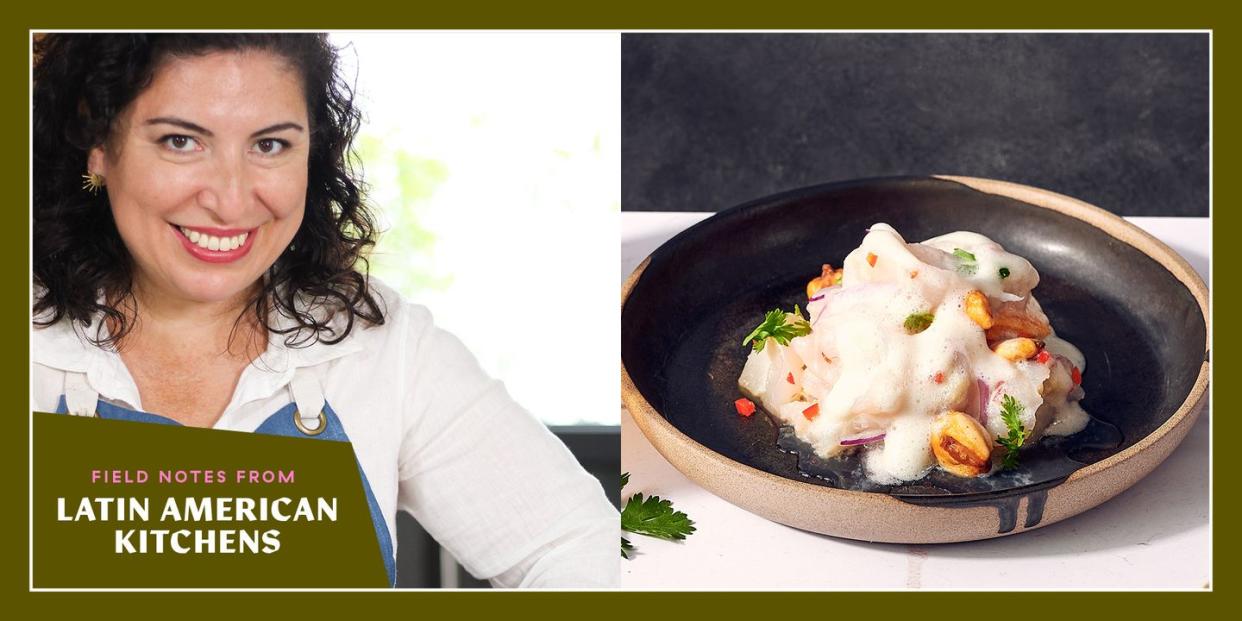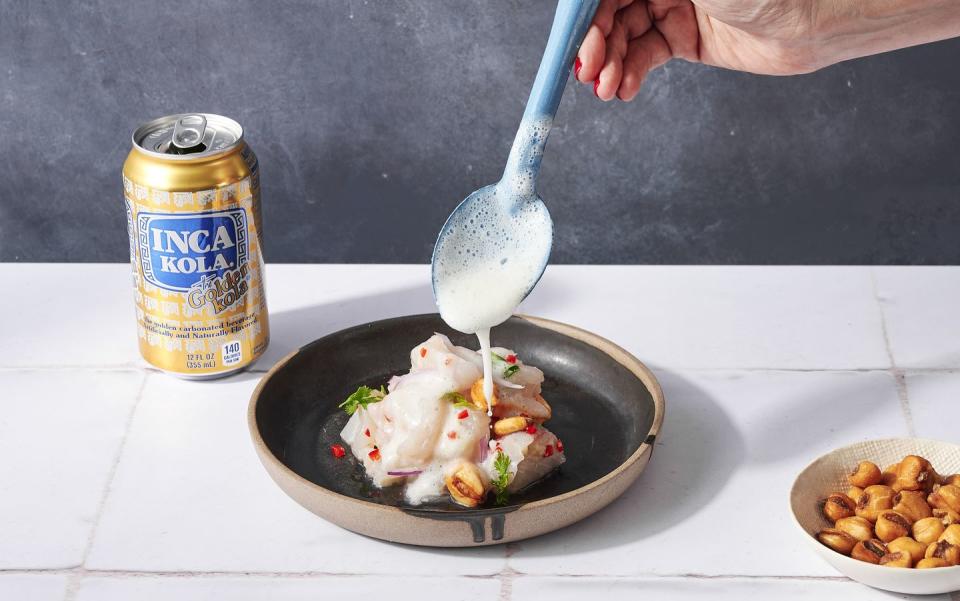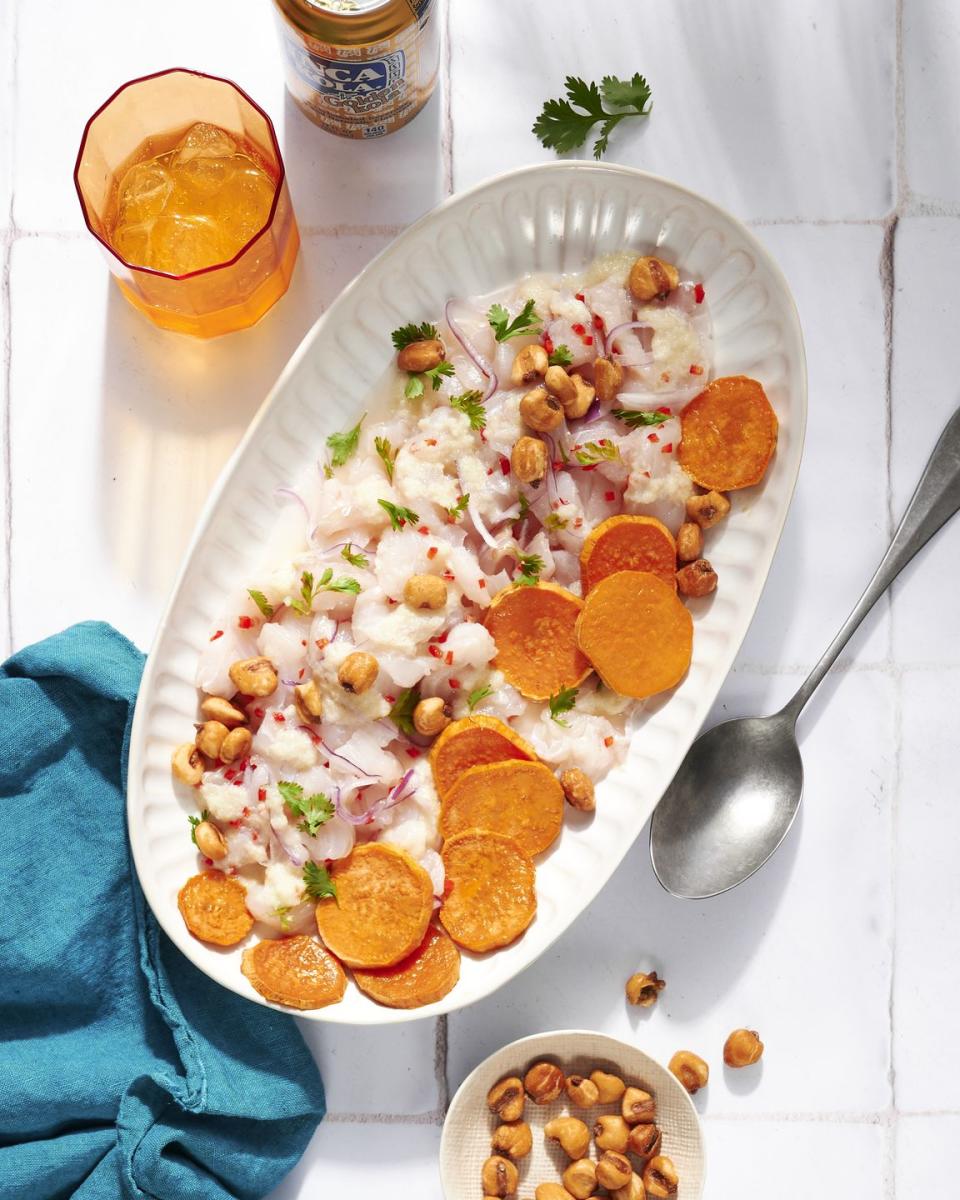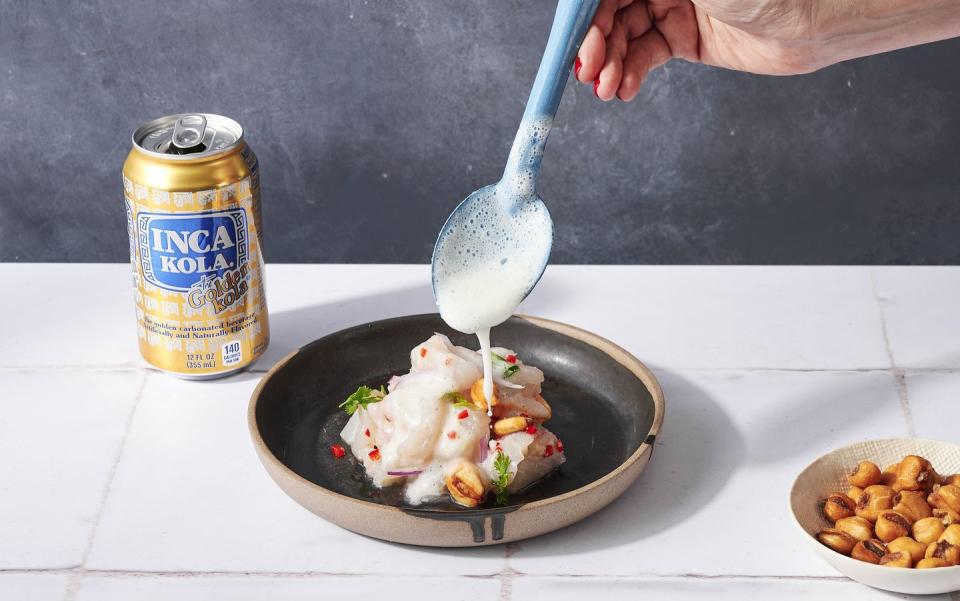Ceviche Is Easier Than You Think

The sun warms my face as I sit, mesmerized by the ocean. I’m at Máncora beach in Peru with local friends who have shown me how to truly enjoy myself: with a refreshing chilcano—pisco with ginger ale and lime juice—and ceviche. I carefully scoop a spoonful of ceviche from the leche de tigre, the citrus marinade known as tiger’s milk, and my mouth explodes with flavor as I watch the waves crash into the shoreline. I’ve never had a ceviche like this, with cubes of corvina sprinkled with crunchy corn nuts, a bit of heat from the aji limo chile balanced by mild, creamy sweet potato and corn. There are no tostadas for dipping. This chica is not in Texas or Mexico anymore!

I didn’t grow up eating ceviche. I was born in the highest big city in the world, La Paz, Bolivia. It shares a border with Peru, as well as indigenous Quechua customs from the Andes. Ingredients you would find in ceviche—such as choclo (corn), ajies (chiles), and cilantro—are used in Bolivia as well, but unlike Peru, it’s landlocked, so ceviche is not as common. My mother was raised by parents from Mexico City and she didn’t grow up with ceviche either. She was shy and uncertain about properly handling fish, and so learning to prepare seafood has been a journey for me.
Ceviche started to grow in popularity in the U.S in the 1990s. I remember once talking with diners at my brother’s Austin Tex-Mex restaurant, El Chile Cafe y Cantina, who wondered aloud how fish could be cooked with lime juice only. I explained that the fish is submerged with lime juice and salt, first thing in the morning. In four hours the pink flesh turns white and changes texture, just like when you cook fish in a pan. Onions, tomatoes, cilantro, salt, and a chile pepper are added. ¡Y listo!

But I had so many more questions, and my quest to understand the origins of ceviche and similar Latin American dishes set me on the path to becoming a chef. I traveled throughout Latin America and was trained by top chefs from Peru, Mexico, Brazil, and Argentina. They taught me how to prepare their most treasured dishes, all of which connect to a shared Spanish colonial history through ingredients and techniques. In fact, ceviche is inspired by Spanish escabeche, where a protein is similarly “cooked” in vinegar instead of citrus juice.
Each Latin American country subsequently developed a unique take on ceviche to include seafood, most often fish, citrus juice such as lime, lemon, or naranja agría (sour orange), and aromatics such as onions and chilies. Given that refrigeration was not available before the turn of the 20th century, fish was caught and prepared the same day. Ceviche is a dish that doesn’t need an oven or the labor of building a fire to cook it. With just lime juice, knife skills, and native ingredients you can make a simple, nourishing dish.
That’s why it’s the most common and popular seafood dish across Latin America. It can be easily found across the region’s expansive coastlines, from Mexico to Central and South America and the Caribbean. I used to assume all ceviches were prepared as they are in coastal Mexico, typically with tomatoes and served with crispy tostadas. In Puerto Rico, the dish is a little closer to its escabeche origins, often incorporating diced bell peppers, onions, and olive oil in a citrusy dressing and fish, shrimp, octopus, and conch. In Central America, El Salvador’s ceviche is similar to how it’s prepared in Mexico, and is sometimes served with saltines. And in South America, Ecuadorians often garnish ceviche with popcorn and cancha (Peruvian corn nut).

But what sets Peru’s ceviche apart is Japanese immigration. The Japanese diaspora in Peru inspired cooks to treat ceviche delicately, like sushi. Flashing the fish at the last minute with leche de tigre maintains a buttery fish texture. And rather than marinating for hours, as is common in many other cultures, in Peru the fish sits in citrus juice for just five minutes. And the aromatics are sublime. Pieces of white fish, garlic, ginger, lime, celery, aji chilies, and cilantro are all blended together and strained for its signature milky marinade. I call it the ultimate fish smoothie. The name leche de tigre is symbolic of its nutritive qualities. There’s a cultural belief that it enhances a man’s virility. It’s also a great hangover cure.
On the surface, ceviche may seem complicated. But it’s incredibly easy and versatile, and an ideal way to make use of abundant seafood. Above all, your fish should be fresh; that’s the key to having the best-tasting ceviche. While I’ve had incredible ceviches prepared by extraordinary chefs and abuelas alike, I believe anybody can make a good ceviche. Recipes are guides, but with ceviche you have to taste and try, and develop the flavor profile you like best.

You Might Also Like

